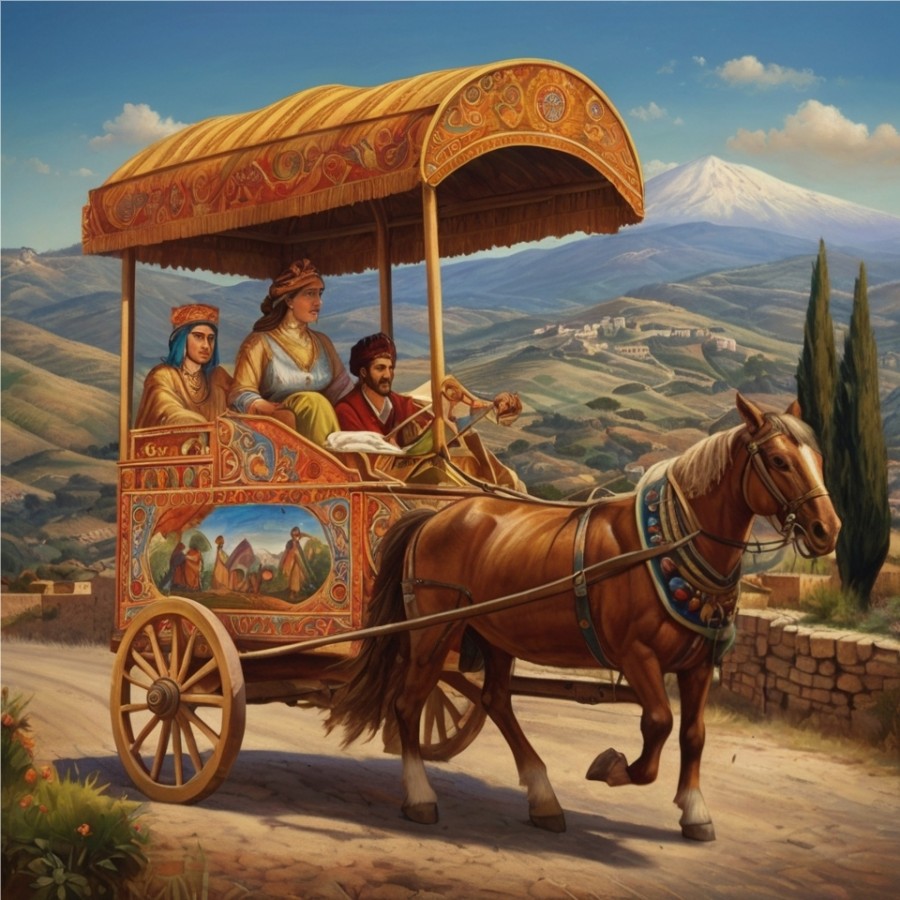
The Sicilian Cart: A Symbol of Tradition and Art
The Birth of a Cultural Icon
Long before the Sicilian cart became a vibrant symbol of artistry, it served a far humbler purpose: transporting goods across the rugged Sicilian terrain. Originating in the early 19th century, these carts emerged out of necessity, their sturdy wooden frames designed to endure the island's unpaved roads. But Sicily, never one to shy away from creativity, transformed these utilitarian vehicles into rolling masterpieces.
Steeped in history, the carts became more than a means of transport; they evolved into symbols of pride and identity. They spoke of the island’s agricultural roots, echoing the resilience and ingenuity of its people.
Craftsmanship Beyond Compare
Creating a Sicilian cart is no ordinary feat. It’s a symphony of woodworking, iron forging, and painting, requiring a collaboration of skilled artisans. The carrettiere (cart maker) shapes the wooden frame, while the blacksmith crafts intricate metal embellishments, including the wheels and fittings.
But the pièce de résistance lies in the painting. This is where the cart becomes a true work of art. Using techniques passed down through generations, artists painstakingly adorn each surface with vibrant scenes that are both eye-catching and steeped in cultural meaning.
A Canvas of Folklore and Mythology
Every painted panel on a Sicilian cart tells a story. From the feats of medieval knights to religious parables, these vivid illustrations offer a visual narrative of Sicilian life and history. It's as if the carts were Sicily's earliest form of cinema, capturing drama, heroism, and morality in every stroke of the brush.
Common themes include the adventures of Charlemagne’s knights or the island’s patron saints. Each cart is unique, yet all share a common purpose: to reflect the indomitable spirit of Sicily.
Sicilian Carts in Modern Times
While these carts were once a common sight rattling down the streets of Palermo or Catania, modernity has relegated them to museums, festivals, and private collections. But this change hasn't dulled their shine; if anything, it has elevated their status.
Today, Sicilian carts serve as cultural ambassadors, appearing in parades and exhibitions worldwide. They symbolize the island’s enduring dedication to preserving its heritage while sharing its beauty with the world.
Preserving a Legacy
The tradition of cart-making faces challenges in the modern era, yet efforts abound to keep it alive. Schools, workshops, and passionate artisans are ensuring that the craft endures, passing their skills to younger generations.
Visitors to Sicily can witness these stunning works of art at festivals like the Festa di Sant'Alfio or by exploring museums such as the Museo del Carretto Siciliano in Aci Sant'Antonio. For those venturing near Mount Etna, guided tours often incorporate cultural stops that showcase these historic treasures.
